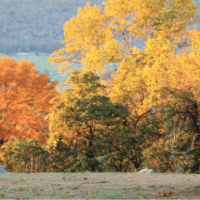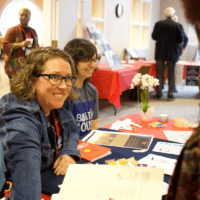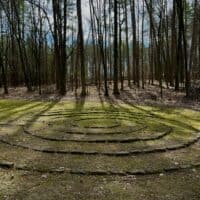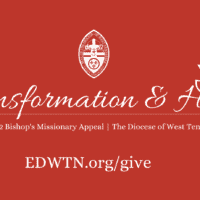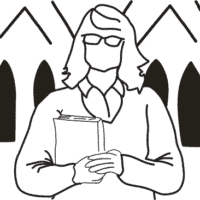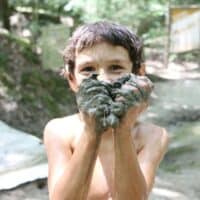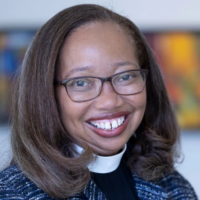Life has changed for everyone dramatically since the COVID-19 pandemic shut down restaurants, businesses, and schools across the country in March. However, when uncertainty was still plaguing everyone, parishioners at Church of the Holy Communion took that as their cue to transform the ministries that were so lifegiving to them and their communities.
Barb Boucher helms More Than a Meal at Church of the Holy Communion
Since 2012, Barb Boucher, parishioner at Church of the Holy Communion, has lead CHC’s More Than a Meal team. More Than a Meal is an intra-parish outreach based at Grace-St. Luke’s that feeds people facing homelessness. Photo Credit: Cindy McMillion
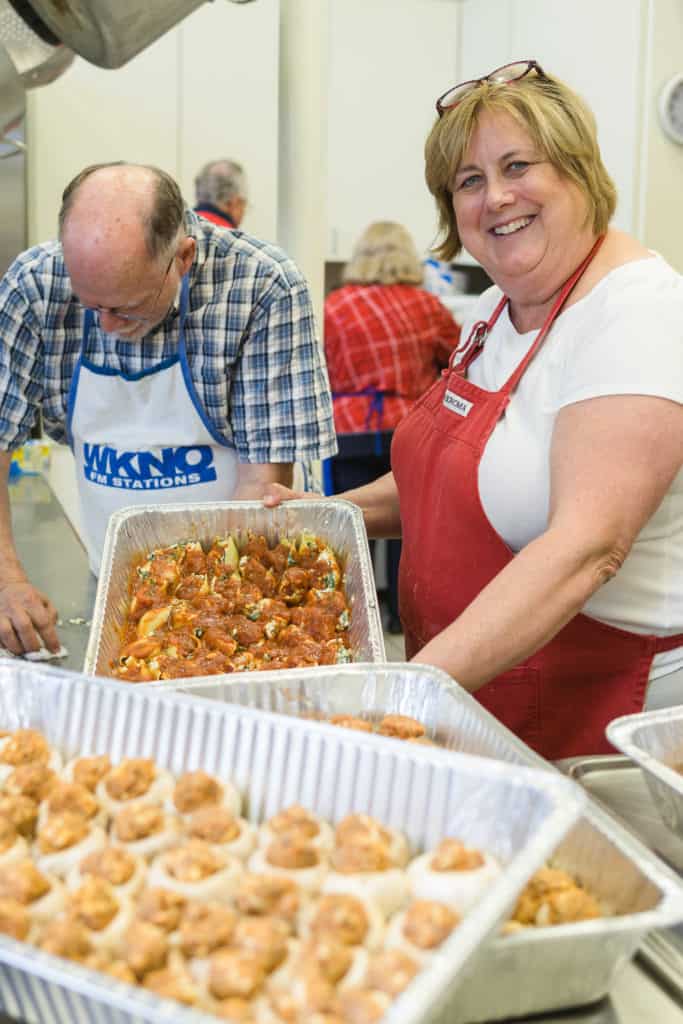
In 2012, Holy Communion volunteers started to provide meals on the first Sunday of every month for the More than a Meal ministry (MTAM). Housed at Grace St. Luke’s Episcopal Church in Memphis, MTAM provides hot meals to those experiencing homelessness and food insecurity while prioritized dignity and relationship building.
From 2012, Barb Boucher has been in charge of “rallying the troops” at Church of the Holy Communion. Guiding her through this work is her philosophy: “the meal we provide would be the meal I would serve guests in my own home.”
Many Hands Make Safe Work
When the pandemic changed things, Barb changed her tactics.
“For years, I always knew that one of the gifts God gave me was my love of feeding people.”
Since the pandemic, she has continued to use her gifts in new ways. Guests are still served a hot meal, but that meal first takes a journey through a few more steps.
In order to safely serve, Barb has organized volunteers by task. The first set of volunteers deliver the necessary groceries to Church of the Holy Communion. Then, a new troupe of volunteers takes over. They assemble “meal kits” from the groceries on big tables outside Church of the Holy Communion. Yet more volunteers will pick these meal kits up and prepare the food in their own home with specific instructions.
Once prepared, the meals take their final journey to Grace Saint Luke’s in Midtown.
Constance Abbey Outreach
While Barb has continued her work with MTAM, she has also led a new ministry out of necessity.
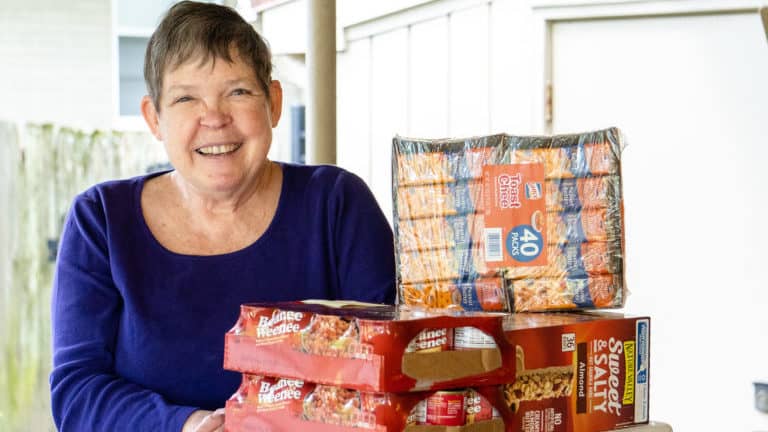
In late March, Barb received a phone call from fellow Holy Communion parishioner Margaret Smith, who is heavily involved at Constance Abbey. Located close to St. Mary’s Cathedral in Downtown Memphis, Constance Abbey is “an intentional community of Episcopalians who practice prayer, study, and action” through service to people experiencing homelessness.
Many faith-based hospitality ministries had been abruptly shut down in the wake of COVID-19, and the volunteers at Constance Abbey had noticed an influx of people coming to share a meal. Many of the usual Constance Abbey volunteers were at high risk of contracting the virus and the organization was facing a shortage of resources. Barb called the Reverend Hester Mathes, senior associate rector at Holy Communion, and they immediately started problem solving.
Reverend Hester recalls that at the time, “there was still so much unknown about how this virus spreads and a lot of fear around possibly putting the people you’re serving at risk.”
Barb had previously distributed bagged lunches as part of her ministry with MTAM, so that following week, Holy Communion funded 300 bagged lunches and Barb assembled them according to CDC guidelines.
When she wasn’t preparing sack lunches, Barb was working with leaders at Lindenwood Christian Church, Saint John’s Episcopal Church, Collierville Christian, Heartsong Church, and Second Baptist to organize volunteers and create a system of sack lunch distribution.
The first step in involving volunteers was education.
According to Rev. Hester, “it’s not just the distributing of it safely but it’s also the preparation. It’s making sure there is a sanitized surface, that the person who is preparing it has a mask on and gloves.”
Barb distributes items to the volunteers that are easier to buy in bulk: mayonnaise packets, gloves, lunch sacks, etc. However, each individual or family is responsible for purchasing and assembling the contents of 10 sack lunches for their assigned day. Preparing them safely is only the first step.
“It’s the prep, it’s the gathering, it’s the distribution – all have to be really carefully implemented,” says Rev. Hester.
More than a meal food dropoff at Holy Communion
Safety is key when it comes to More Than a Meal dropoff at Holy Communion. Those involved in the project adhere to a carefully choreographed process of dropping off their food donations to keep their community healthy. Photo credit: Cindy McMillion
Once the meals are assembled, the volunteers deliver them to the parking lot of Holy Communion. Sanitized bins lined with large plastic bags are waiting for them. One at a time, the volunteers place their sack lunches in the bins. The designated volunteer delivery driver will collect each bag of sack lunches and load it into the back of their vehicle. They then drive to Constance Abbey and open the back of their car remotely so that Constance Abbey volunteers can access the meals. The sack lunches are then placed on outdoor tables for safe distribution.
The sack lunches contain more than food.
“There are some whose contribution is to write notes that remind our most vulnerable brothers and sisters that they are loved; that God’s light shines from them; that there are people praying for them,” said Rev. Hester.
“It’s not just about feeding, it’s about being a community together in the Body of Christ.”
There are now well over 100 volunteers between this network of churches providing 70 meals a day to Constance Abbey.
Framing the Devine
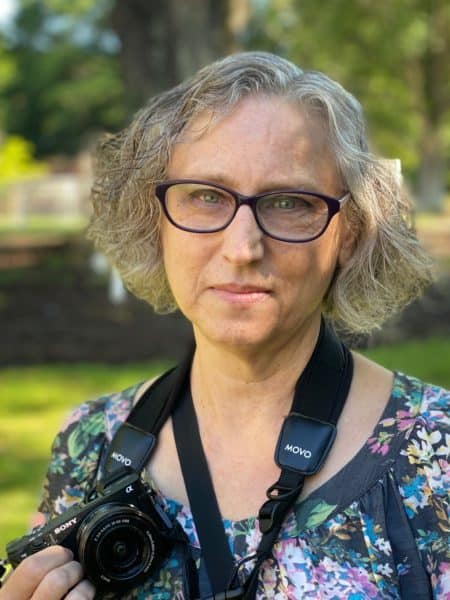
Creativity is key not only in distributing food for these ministries, but in funding it. While Holy Communion has continued to provide support from their own budget, another parishioner decided to use her unique gifts as well. When Cindy McMillion retired from teaching, she wanted to do something creative and picked up a camera. She now serves as the parish photographer at Holy Communion but continues with her own community projects.
The first, “Connecting Memphis,” began in 2014 and lasted 3 years. This expansive project included 1200 interviews and photographs, including many people she met through the Wednesday Eucharist and Breakfast at St. Mary’s Episcopal Cathedral. As she developed the project, Cindy knew that she wanted to include the economically disadvantaged and started to take portraits of those she had met on Wednesday mornings, many of which were also part of the Constance Abbey community. The next week, she would print and package these photos in a rigid plastic sleeve to give to the subject.
For Cindy, this is a way to say, “You matter. The image of God is in you.” Through her regular Wednesday attendance and this project, Cindy got to know a lot of people and some of their stories.
When the pandemic hit, Cindy was searching for a way to continue to support the community she had gotten to know. Cindy was immediately interested in Church of the Holy Communion’s new work with Constance Abbey. According to Cindy, “people are being fed there every day, three meals a day, and it’s costly.”
After some brainstorming, Cindy, Rev. Hester, and Holy Communion Communication Director Emily Austin had an idea: “Framing the Divine.”
“I had just talked to a Holy Communion friend, Lee Sandberg, about the socially distanced photo shoots that were happening in Memphis by another local photographer” said Emily. “We both thought it would be awesome if Cindy could do something like this.
“Cindy had mentioned to me how much she was missing taking photographs of people. Socially-distanced shoots seemed like it would fill her spirit.”
The idea was this: Cindy would charge $50 to take family photos of Holy Communion parishioners. That money would then be used to fund the feeding ministries at Holy Communion. However, it was not only a way to support a ministry, but “a way for me to get to see people during quarantine because I was getting pretty tired of shooting pictures of flowers…”
This project has raised more than $1,300.
For Cindy, “This is a way I can use what I know how to do and have the money go to where I want it to go – to help people I’ve gotten to know.”
